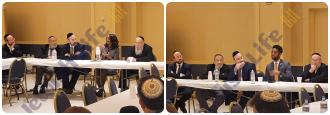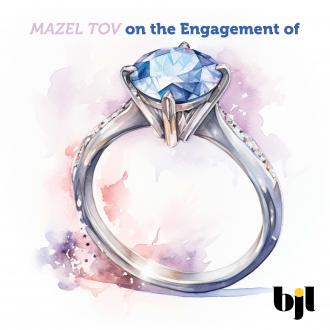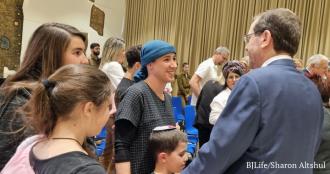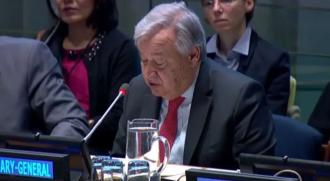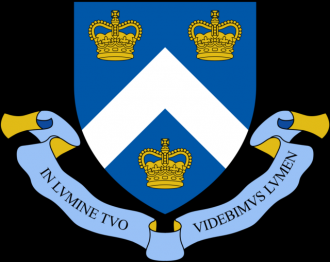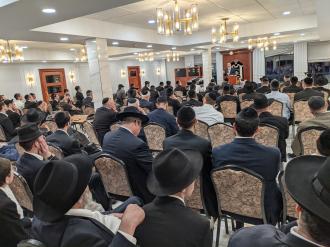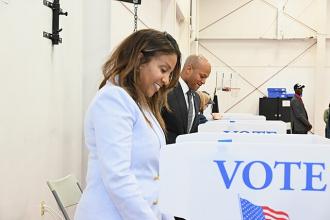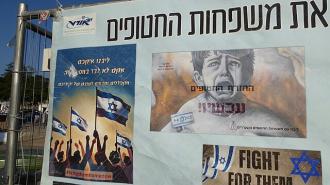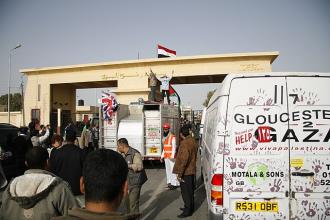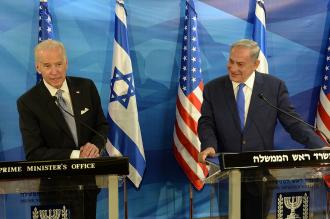Would the Rav please provide a bit of background information?
I am a sixth-generation Rav on my father’s side. While my father was born in America, his forebears were born in Hungary. All were Hungarian Rabbanim from the town of Szerencs in northern Hungary; my great-great-grandfather, Rav Avraham Shmuel Goldberger, z”l, came to America in the 1890s.
My great-grandfather, his son, Harav Yehuda Leib, z”l, was a Rav in Szerencs and then in New York City on the Lower East Side, where he served as Rav at Chevra Bachurim Anshei Ungaren, located on Third Avenue and Avenue C. He was a talmid of the Chasan Sofer and the Unsdorfer Rav, the Be’er Shmuel, zecher tzaddikim livrachah. Rav Yehuda Leib was an outstanding rabbinic figure in those years in New York and was niftar in 1939. My father, z”l, remembered him well.
When one of my sons, who is assistant Rav at my shul, received semichah from Beth Medrash Govoha in Lakewood, he became the seventh-generation Goldberger Rav.
I was born and raised in Denver, Colorado. My father was Rabbi Daniel Goldberger, z”l, who served as Rav in that community for more than 50 years. He was a talmid of Beis Medrash L’Torah in Chicago under the then-Rosh Yeshivah Harav Chaim Kreiswirth, zt”l. In my youth, I attended Hillel Academy; for high school, I attended Ira Crown Jewish Academy in Chicago.
After our marriage in 1984, my wife and I went to Eretz Yisrael, where I learned in Yeshivas Mir in Yerushalayim for that year. I received my semichah from Harav Pinchas Hirschsprung, zt”l, in Montreal.
Upon our return to Denver, I served as assistant Rav of the Hornosteipol kehillah under Rav Mordechai Twerski, shlita, who succeeded his father, Harav Shloime Twerski, zt”l, as Hornosteipol Rebbe in Denver and as Rav of his shul. Today, he heads a shul in Flatbush.
Who was the biggest influence in the Rav’s life?
From the age of 18 to 23, from the late 1970s through the early ’80s, I was fortunate to be part of a group of talmidim who learned under Harav Shloime Twerski, zt”l, Hornosteipol Rebbe in Denver. He was a Gadol in Torah, avodah and gemilus chassadim.
There were many aspects to his greatness. He was a Posek as well as an original thinker. He was very rooted in his family’s mesorah, that of Hornosteipol and Chernobyl, but also keenly aware of the contemporary world; he was a blend of several special qualities that enabled him to help the many people who sought his guidance, with meaning, purpose and kedushah. He would challenge you and accept you at the same time.
At his Shabbos table, he hosted 30-40 people (on Yom Tov, many more), spoke profound and relevant words of Torah, and sang moving and stirring niggunim.
On Simchas Torah, with his tallis pulled over his head, he danced the first hakafah clutching a small sefer Torah that had belonged to his grandfather, Harav Leibele Twerski, zt”l; it reflected the intensity of both simchah and yirah together. It was an incredible sight to behold and one I will never forget.
Rav Shloime and my father were close friends, even though ideologically they represented different worlds. That is how things were. Even though families had different affiliations and backgrounds, everybody grew up together and got along. The young people all attended the same school; everyone was friendly with one another.
Another special memory was going with my father to the Rebbe’s house on Erev Pesach to bake matzah. I remember him joyfully singing Hallel while rolling the dough. The derech that I embraced in life, gravitating towards Chassidus as well as the teachings of the Ramchal, was largely due to his influence.
My father was another major influence. He was dedicated b’lev vanefesh to Klal Yisrael; his life was devoted to helping people and showing respect and compassion to everyone, thus making him one of the most beloved Rabbanim in Denver.
My twelfth-grade Rebbi, Rabbi Hirsch Isenberg — a talmid chacham and Holocaust survivor — had a major influence on me in my senior year.
Please tell us about your shul, Tiferes Yisroel. How is it unique?
I became the Rav at Tiferes Yisroel in August 1986. Harav Michel Twerski, shlita, of Milwaukee, my Rebbe’s brother, had informed me about a group of 12 idealistic families in Baltimore who desired to organize a shul that was family-oriented and warm, with a chassidishe flavor. My wife and I traveled there to meet with them. I was accepted and have been here ever since.
In the beginning, our shul held the Shabbos minyan in someone’s living room. After nine months we rented a small building, which we eventually purchased. It was the shul’s home for about seven years. By that time, we had 60-70 families and needed larger quarters. In 1993, we bought the property next door, renovated it for a shul, and have been there ever since. We presently have around 125 families, bli ayin hara.
There are numerous shiurim each day of the week, including Shabbos, on topics such as Gemara, Halachah, Megillas Esther, Sefer Taamei Haminhagim and Chassidus.
Our members volunteer to handle and manage all of the shul and community programming the shul offers.
My wife, Rebbetzin Bracha, shetichyah, has played a very active role in the shul from its founding until today — teaching the women, preparing kallos for marriage, counseling people, welcoming guests into our home for Shabbos and Yom Tov for so many years, creating a beautiful ambiance at shul events, kiddushim and banquets, and teaching and speaking in the community at large.
Forty families from our kehillah have moved to Eretz Yisrael. My wife and I were there recently and held a Shabbaton for these families in Ramat Beit Shemesh drawing over 100 people! During previous visits, we held reunion gatherings with these families. There is a great mutual interest in staying in touch.
Please speak about the major role music plays in your harbartzas haTorah and in your kehillah.
My feeling is that music and neginah open a door to the heart and soul of a Yid. There are two essential roles I feel neginah fills. First, it enhances avodas Hashem. Second, neginah itself is an act of avodas Hashem. The Rambam writes in Hilchos Klei Hamikdash 3:2, based on Maseches Arachin 11a: “Eizehu sheirus shehu b’shem Hashem? Hevei omer zu shirah — What is the service that is for Hashem? It is shirah.” This, of course, refers to the avodah of the Leviim who sang in the Beis Hamikdash as sheirus b’shem Hashem.
Music teaches us that if we really desire to experience an aliyah b’ruchniyus, we should sing together b’achdus. This avodah involves singing, listening, adjusting and making a concerted effort to be part of a greater whole. Singing together as a kehillah means you need to listen to the others who are singing, not going ahead or lagging behind. If you adjust yourself to their speed and keep pace with them, achdus is achieved.
Harav Shlomo Alkabetz, zt”l, in his sefer Manos HaLevi, explains that the seudah of Achashverosh, with all trappings of luxury, offered many pleasures but had no music — because Achashverosh feared that music would have awakened the Yidden to teshuvah, thus foiling his evil plans.
In our shul, we sing a lot during davening and at shul events. We have a diverse membership — baalei teshuvah, frum from birth, men who wear shtreimels or hats, men who don’t wear a hat. Yet each Leil Shabbos, at the end of Lechah Dodi, we all dance around the shul in a large circle with a lot of spirit; this is very uplifting and a beautiful sight to behold.
Around 11 years ago, b’ezras Hashem, I produced a CD of original niggunim I composed. Over the years we have also held several melaveh malkahs for the men at which I teach them new niggunim.
Any meaningful memories you can share about your years in harbatzas haTorah or your interaction with your members?
For over three decades, my Rebbetzin and I have watched our members’ growth. It is a very precious feeling to stand under the chuppah at the wedding of a child of one of our families and reflect upon how these young people grew up and all that their parents did to enable them to reach this point. In some instances, both sides are from our member families, including in our own family — four of our six children married members of the kehillah! Seeing firsthand the culmination of people’s aspirations is a very meaningful and treasured moment.
It is inspiring to see the chassadim people do for others. As a Rav, I have seen people take the initiative to raise or donate funds for someone heavily in debt or for one who had tremendous wedding expenses, all done with utmost discretion. Other times, people provided hospitality or meals. I find these acts of kindness and the way in which they are done to be very beautiful.
An exceptional member in our shul for many years had undergone geirus because he descended from Marranos. Rabbanim and I present at the mikveh to preside over the tevilah, noticed that he stayed under the water for an unusually long period of time. Later, when I asked for an explanation he said, “Rabbi, you know I am from a Marrano background. I am the first one in my family to go through an Orthodox conversion. I have a very large family, and I was thinking of every single member of my family and hoping that they too would come this way.”
Any advice you can offer for inspiring people’s growth?
First, one must try to be authentic and convey that perfectionism and pursuit of a flawless image are not Torah values. Instead, growth through searching for truth, struggling, joy and tears constitutes the avodah of a Jew and enables one to create a real awareness of Hashem’s presence in his life.
Secondly, each person has an individualized mission in life, and one should not be distracted by another person’s mission. Each person has been endowed with certain middos by Hashem that allow him to make a particular contribution to Klal Yisrael. It is most fulfilling to help an individual open up the door to himself, to see his own individual kochos. If we are all genuine to our own particular tafkid, our accomplishments along those lines will be long-lasting and enduring.
Thank you, Rabbi Goldberger. We wish you much continued hatzlachah in your avodas hakodesh

